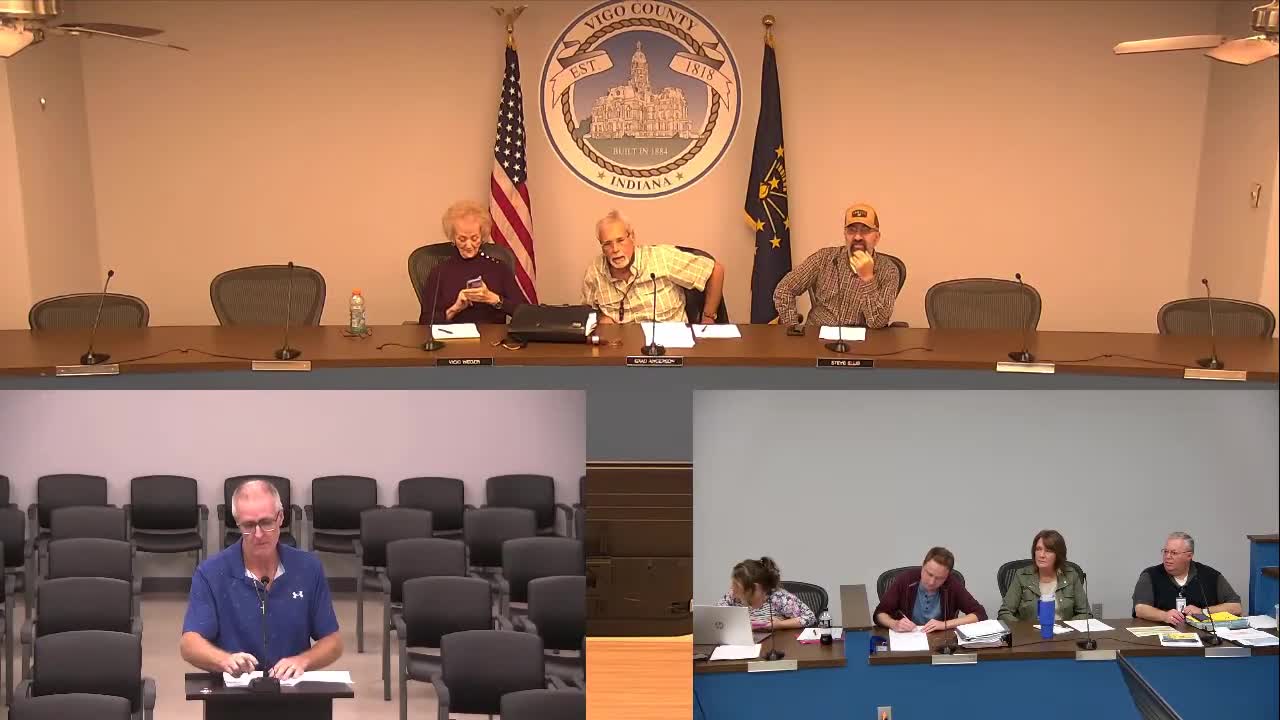County presenter says Indiana homeowners pay among lowest property taxes in surrounding states; farmland values rose sharply from 2022–24
October 10, 2025 | Vigo County, Indiana
This article was created by AI summarizing key points discussed. AI makes mistakes, so for full details and context, please refer to the video of the full meeting. Please report any errors so we can fix them. Report an error »

A county presenter delivered comparative data on property taxes and farmland values, telling the Vigo County budget committee that recent studies (covering roughly 2020–2023) show Indiana homeowners pay lower median property taxes than several neighboring states and that farmland values rose substantially through 2023.
The presenter said the median property tax paid by a homeowner with a mortgage in Indiana was about $1,550, compared with $3,200 nationwide; figures cited for neighboring states included Illinois $5,300, Kentucky $1,600, Michigan $2,900 and Ohio $2,800. The presenter also said median property tax as a percentage of income was 1.7% in Indiana versus 3.0% nationally.
On farmland, the presenter said a six-year rolling average formula (provided to counties by state study work such as Purdue’s commodity and yield analyses) determines assessed values for agricultural land, and that farmland values peaked in 2023 near $10,000 per acre in some areas. He cautioned that the six-year average can keep assessed values elevated through 2028 because the COVID-era prices from 2020–2023 are part of the rolling calculation.
The presenter summarized historical context, noting Indiana’s property-tax burden as a percent of income declined from the 1970s to the present because of legislative changes. He also fielded county member questions about why neighboring counties might show different effective tax rates even though the state cap rules apply; the presenter explained differences in local tax rates reflect differences in local infrastructure and service levels.
No formal action followed; the presentation was given for committee information as part of broader budget discussions.
Ending: The presenter offered to provide copies of the handout and underlying data to staff for distribution and said the county assessor’s office or budget staff could publish the material to help answer taxpayer questions during appeals season.
The presenter said the median property tax paid by a homeowner with a mortgage in Indiana was about $1,550, compared with $3,200 nationwide; figures cited for neighboring states included Illinois $5,300, Kentucky $1,600, Michigan $2,900 and Ohio $2,800. The presenter also said median property tax as a percentage of income was 1.7% in Indiana versus 3.0% nationally.
On farmland, the presenter said a six-year rolling average formula (provided to counties by state study work such as Purdue’s commodity and yield analyses) determines assessed values for agricultural land, and that farmland values peaked in 2023 near $10,000 per acre in some areas. He cautioned that the six-year average can keep assessed values elevated through 2028 because the COVID-era prices from 2020–2023 are part of the rolling calculation.
The presenter summarized historical context, noting Indiana’s property-tax burden as a percent of income declined from the 1970s to the present because of legislative changes. He also fielded county member questions about why neighboring counties might show different effective tax rates even though the state cap rules apply; the presenter explained differences in local tax rates reflect differences in local infrastructure and service levels.
No formal action followed; the presentation was given for committee information as part of broader budget discussions.
Ending: The presenter offered to provide copies of the handout and underlying data to staff for distribution and said the county assessor’s office or budget staff could publish the material to help answer taxpayer questions during appeals season.
View full meeting
This article is based on a recent meeting—watch the full video and explore the complete transcript for deeper insights into the discussion.
View full meeting
